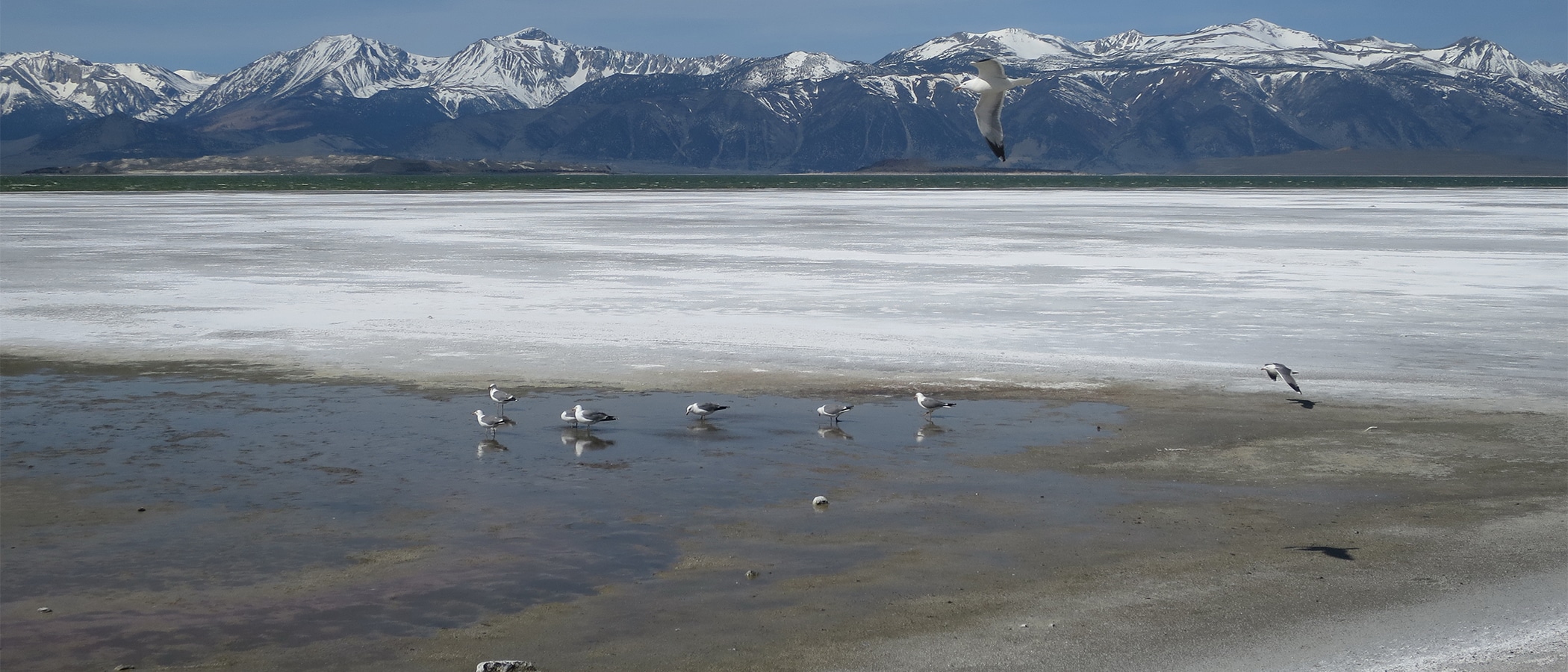
Last fall the Great Basin Unified Air Pollution Control District hosted a Mono Air & Water Workshop in Lee Vining. The purpose of the workshop was to initiate a dialogue among stakeholders, agencies, and the Great Basin governing board to discuss and address Mono Basin air quality and lake level issues in a public forum. Mono Lake is a source of particulate air pollution because excessive water diversions by DWP dropped the lake’s level, exposing dry lakebed that produces dust in the wind. Air quality violations at Mono Lake persist and remain the worst in the nation for particulate matter less than ten microns in diameter, or PM-10 (see Fall 2021 Mono Lake Newsletter).
A Mono Lake air quality summit
Those in attendance included the Inyo National Forest, the Mono Lake Kootzaduka’a Tribe, the Mono Lake Committee, California State Parks, California Air Resources Board, and Great Basin staff and senior scientists. The Los Angeles Department of Water & Power (DWP) was invited, but it neither attended nor provided any statement in lieu of its conspicuous absence.
Presentations by multiple parties, including the Mono Lake Kootzaduka’a Tribe, provided clear direction that the best way to stop the air quality violations is to put water into Mono Lake and submerge the exposed lakebed. In the words of Kootzaduka’a Tribe Chair Charlotte Lange, “Let’s start making changes and not just talk about it.”
Mono is not like Owens
For the Inyo National Forest, the idea of large-scale engineering solutions to fix the dust problem—like those implemented at the dry Owens Lake—is clearly not appropriate within the Mono Basin National Forest Scenic Area. To maintain the Mono Basin’s exceptional, protected scenic resources, raising Mono Lake’s level to cover the dust-emitting exposed lakebed is the only appropriate, feasible, and ecologically beneficial solution. This theme echoed among all stakeholders—the sooner the lake can be raised, submerging the dust-producing lake playa, the better.
Reaching out to fix the problem
Particulate matter air quality violations at Mono Lake continue to occur because Mono Lake remains 12 feet below its mandated level. In July 2021, Great Basin sent a letter to the DWP Commissioners requesting that DWP “take immediate action” to solve air quality violations in the Mono Basin. Great Basin wrote, “Rather than expend our joint resources on animosities and court battles, we should spend our energies and resources on forging a cooperative relationship … success is achieved in continuing to provide water for the needs of the people of Los Angeles and the clean air needs of the people of the Mono Basin.”
DWP delays and obfuscates
Four months later, just days before the workshop, DWP responded: “While [DWP] … has reviewed your letter and tried to understand the myriad claims and issues raised, our ability to meaningfully engage is limited without the benefit of the data and analysis…” The letter then stated, “[DWP] also encourages [Great Basin] to evaluate the numerous off-lake sources that potentially affect air quality in the Mono Basin.”
DWP’s letter seemed to refute the existence of air quality exceedance data from decades of monitoring. During the workshop, Phil Kiddoo, Great Basin’s Air Pollution Control Officer, remarked, “Correspondence received from DWP clearly indicates that DWP has withdrawn from trying to productively resolve or even discuss the air quality problem that they have. It’s unfortunate, we had the opportunity for everybody to bring something to the table today, but they are not here.”
Meanwhile, another drought is emerging, and Mono Lake’s level is likely to fall farther, increasing the likelihood of more air quality violations. With Mono Lake’s unfortunate status as the largest active source of PM-10 pollution in the nation, we can expect to learn more soon regarding Great Basin’s modeling, analysis, and potential enforcement actions.
This post was also published as an article in the Winter & Spring 2022 Mono Lake Newsletter. Top photo by Geoff McQuilkin.
